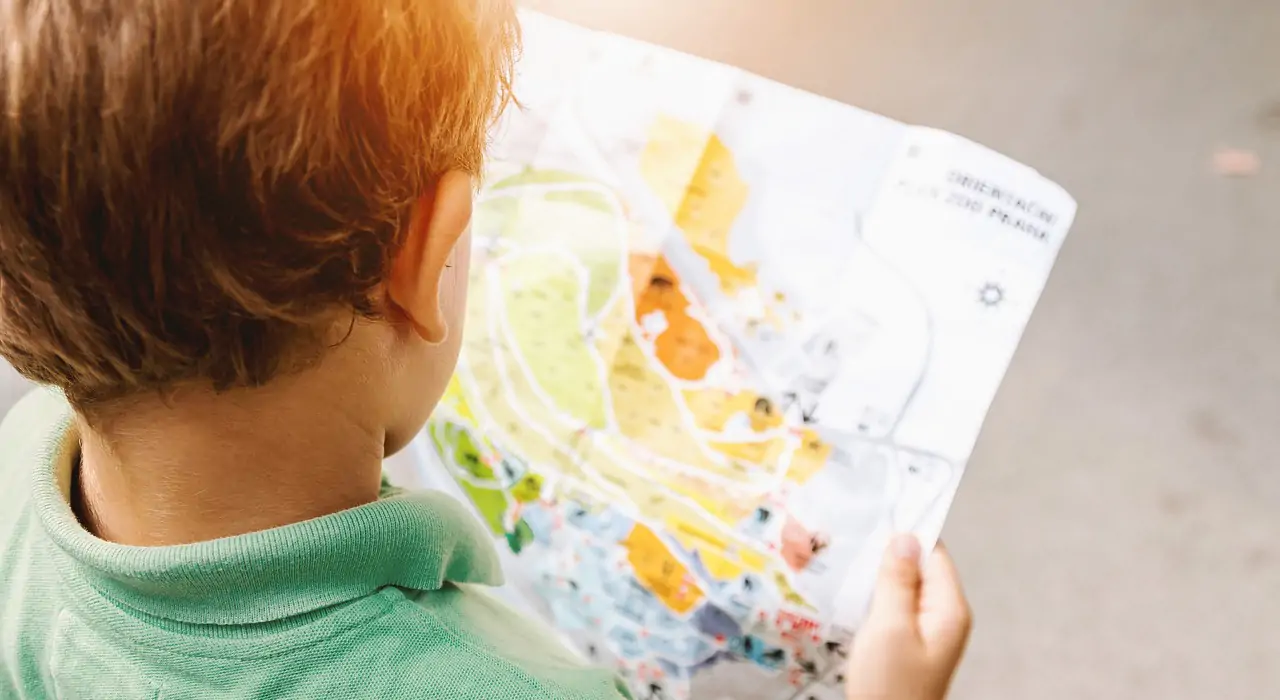Now let’s turn to IELTS Test 8, Section 2, which will discuss a map of an agriculture park. There are some simple and practical collocations to describe places and their spatial directions.
An Example from IELTS 8 Test 2 Section 2
The following map as well as its script from listening test section 2 (original audio file) shows how the park looks like:

Let’s start by seeing what there is to do. As you can see here on our giant wall plan, we are now (1) situated in the Reception block… here. (2) As you walk out of the main door into the park there is a path you can follow. (3) If you follow this route you will immediately come into the Rare Breeds section, where we keep a wide variety of animals which I shall be telling you a little more about later. (4) Next to this… moving east… is the large grazing area for the rare breeds. (5) Then further east…. in the largest section of our Park is the Forest Area. (6) South of the grazing area and in fact just next to the Reception block is our Experimental Crop Area. (7) In the middle of the Park… this circular area is our lake…. These two small rectangular shapes here… are the Fish Farms where we rear fish for sale. (8) To the east of those is the marsh area which attracts a great many migrant birds. (9) In the south-eastern corner, beyond the marsh is our Market Garden area, growing vegetables and flowers.
All these areas can be visited by the general public for almost all the year… although… please take note of the large signs (10) at the entrance to each area which tell… which tell you when certain areas are being used for particular controlled experiments and are therefore temporarily out of bounds to the public.
We have bicycles which you can hire (11) behind the Reception block…here… the healthy ones of you can go on foot and finally there’s our electric tram, powered from solar cells. You find more information about this (12) at the front entrance.
Key Collocations for Directions
| # | Collocation | Explanation |
|---|---|---|
| 1 | Situated in the Reception block | Describes a specific location within a larger complex, such as a building or area. |
| 2 | As you walk out of the main door | Refers to exiting a place and transitioning into a new area, commonly used in navigation. |
| 3 | If you follow this route | Directs someone to follow a particular path or course to reach a destination. |
| 4 | Next to this... moving east | Indicates proximity to another location and specifies the direction to move, in this case, eastward. |
| 5 | Then further east | Refers to continuing movement in the eastern direction, often indicating the next landmark. |
| 6 | South of the grazing area | Specifies a location relative to a known point, in this case, to the south of another location. |
| 7 | In the middle of the Park | Indicates a central position within a larger area or space. |
| 8 | To the east of those | Points out a location or feature that lies east of previously mentioned landmarks or areas. |
| 9 | In the south-eastern corner | Refers to something located in the southeastern part of an area, often used to describe corners or borders. |
| 10 | At the entrance to each area | Refers to the location at the entry point of various spaces or sections. |
| 11 | Behind the Reception block | Describes a position located to the rear or back of a reference point, in this case, the Reception block. |
| 12 | At the front entrance | Indicates a place near the entrance where details or information can be accessed. |
